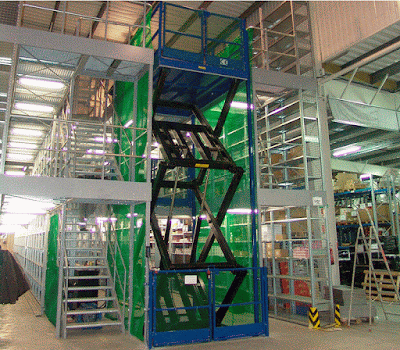The Top Features to Look for When Buying a Low Profile Scissor Lift
When it comes to industrial lifting equipment, low-profile scissor lifts are essential tools for efficient and safe material handling. Whether you need to lift heavy goods or cargo, choosing the right low-profile scissor lift is crucial to ensure optimal performance and workplace productivity. In this blog, we will explore the key features you should look for when purchasing a low-profile scissor lift, with a focus on goods lift and cargo lift applications.
Stability and Load Capacity
Load Capacity:
One of the primary considerations when buying a low-profile scissor lift for goods or cargo lifting is its load capacity. The load capacity determines the maximum weight the lift can safely handle. It is crucial to assess your specific lifting requirements and choose a scissor lift with an adequate load capacity. Remember to consider both the weight of the items being lifted and any additional equipment or personnel that may be on the platform.
Stability:
Stability is another critical factor to consider when selecting a low-profile scissor lift. The lift should provide a stable platform for lifting operations, even at its maximum load capacity. Look for features such as a wide base, sturdy construction, and stabilizing mechanisms like outriggers or stabilizer legs. These features help distribute the load evenly and prevent the lift from tipping over, ensuring a safe working environment.
Platform Size:
The size of the platform is also an important consideration, especially when dealing with goods and cargo lifting. Ensure that the platform dimensions are suitable for the size and shape of the items you need to lift. A spacious platform provides more flexibility and allows for easy maneuverability during loading and unloading operations. Additionally, check if the platform has a non-slip surface to prevent accidents and ensure a better grip while handling the goods.
Versatility and Ease of Use
Height Range and Lifting Speed:
Consider the height range and lifting speed capabilities of the low-profile scissor lift. The lift should be able to reach the required height for your specific applications. Whether you need to access elevated storage areas or load goods onto trucks, make sure the lift offers sufficient vertical reach. Additionally, pay attention to the lifting speed, as faster operation can enhance productivity and save valuable time.
Maneuverability:
In industrial settings, maneuverability is crucial for efficient material handling. Look for a low-profile scissor lift that offers ease of movement. Features such as a compact design, swivel wheels, and a tight turning radius enable smooth navigation in narrow aisles and confined spaces. This ensures that you can easily position the lift precisely where it's needed, improving overall productivity and reducing downtime.
Control Systems and Safety Features:
A reliable control system is essential for safe and efficient operation. Opt for a low-profile scissor lift that provides user-friendly controls, allowing operators to handle the lift smoothly and accurately. Look for features like intuitive joystick controls, emergency stop buttons, and safety sensors that prevent accidents and injuries. Safety features such as guardrails, safety interlocks, and overload protection mechanisms should also be prioritized to ensure a secure working environment.
Durability and Maintenance
Construction and Materials:
Investing in a low-profile scissor lift with durable construction is crucial for long-term reliability. Look for lifts made from high-quality materials such as steel or aluminum, as they offer superior strength and resistance to wear and tear. Consider factors such as corrosion resistance, welding quality, and overall build quality to ensure the lift can withstand rigorous industrial environments.
Maintenance Requirements:
Efficient and cost-effective maintenance is vital for keeping your low-profile scissor lift in optimal condition. Before making a purchase, inquire about the manufacturer's recommended maintenance schedule and the availability of spare parts. Look for lifts that have easily accessible components and a reputation for reliability. Choosing a lift from a reputable manufacturer with a comprehensive service network can simplify maintenance and minimize downtime.
Warranty and After-Sales Support:
Lastly, consider the warranty and after-sales support provided by the manufacturer. A good warranty demonstrates the manufacturer's confidence in their product's quality. Additionally, check if the manufacturer offers prompt technical support, spare parts availability, and servicing options. Having reliable after-sales support ensures that any issues or concerns can be addressed swiftly, minimizing disruptions to your operations.
Conclusion:
Choosing the right low-profile scissor lift is a critical decision that can significantly impact your material handling operations. By considering the key features discussed in this blog post, such as stability, load capacity, platform size, versatility, ease of use, and durability, you can make an informed decision and ensure your lifting equipment's optimal performance, safety, and efficiency. When searching for a reliable low-profile scissor lift, consider XYZlifts, a reputable manufacturer known for their high-quality products and comprehensive after-sales support.
By partnering with XYZlifts and carefully evaluating the features mentioned, you can confidently purchase a low-profile scissor lift that meets your specific needs and enhances your material handling processes, ultimately creating a productive workplace.
.png)



Comments
Post a Comment